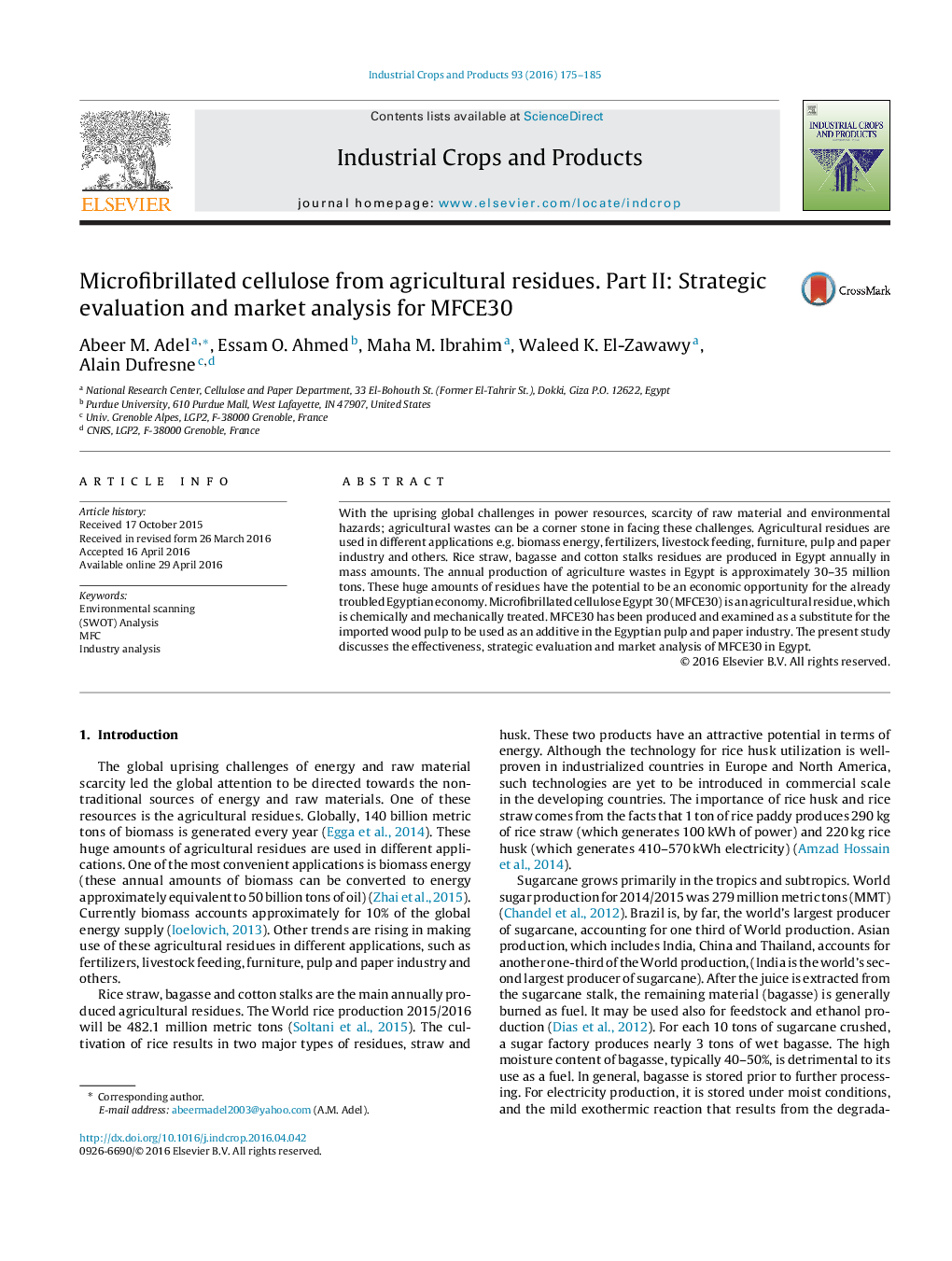| Article ID | Journal | Published Year | Pages | File Type |
|---|---|---|---|---|
| 4512067 | Industrial Crops and Products | 2016 | 11 Pages |
•The annual production of agriculture wastes in Egypt is approximately 30–35 million tons.•The agricultural residues represent a burden on the farmers’ shoulders since they mostly do not have any economic return out of these residues.•Microfibrillated cellulose Egypt30 (MFCE30) is an agricultural residue, which is chemically and mechanically treated.•MFCE30 has been produced and examined as a substitute for the imported wood pulp to be used as an additive in the Egyptian pulp and paper industry.•The present study discusses the effectiveness, strategic evaluation and market analysis of MFCE30 in Egypt.
With the uprising global challenges in power resources, scarcity of raw material and environmental hazards; agricultural wastes can be a corner stone in facing these challenges. Agricultural residues are used in different applications e.g. biomass energy, fertilizers, livestock feeding, furniture, pulp and paper industry and others. Rice straw, bagasse and cotton stalks residues are produced in Egypt annually in mass amounts. The annual production of agriculture wastes in Egypt is approximately 30–35 million tons. These huge amounts of residues have the potential to be an economic opportunity for the already troubled Egyptian economy. Microfibrillated cellulose Egypt 30 (MFCE30) is an agricultural residue, which is chemically and mechanically treated. MFCE30 has been produced and examined as a substitute for the imported wood pulp to be used as an additive in the Egyptian pulp and paper industry. The present study discusses the effectiveness, strategic evaluation and market analysis of MFCE30 in Egypt.
Graphical abstractThe field preparation of agricultural stocks.Figure optionsDownload full-size imageDownload as PowerPoint slide
